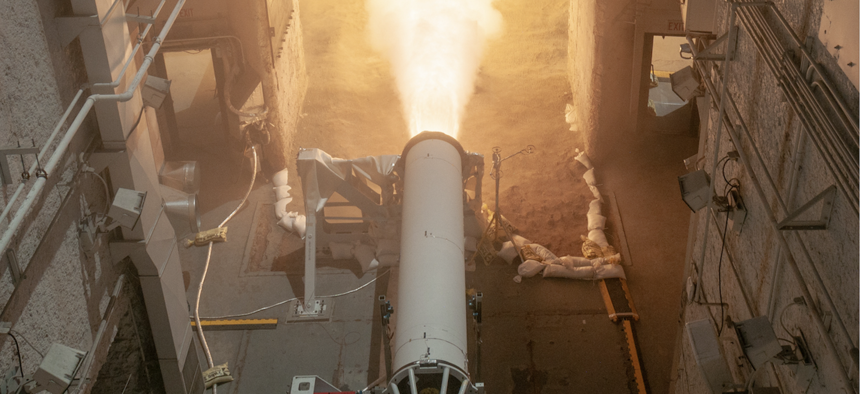
This hypersonic weapon, shown during a test, will be built at a new all-digital Lockheed Martin manufacturing facility that opened Oct. 4, 2021, in Alabama. Lockheed Martin
Lockheed Opens New Hypersonic Weapons Factory In Alabama
The manufacturing plant is the third digital factory opened by the world’s largest defense contractor this year.
Lockheed Martin opened a new hypersonic weapons manufacturing site in Northern Alabama on Monday that will build missiles for the U.S. Navy and U.S. Army.
It’s the third all-digital facility opened by Lockheed this year, part of a company-wide focus on new, purpose-built factories that can build next-generation weapons faster and cheaper than in the past.
“The nature of the design—the flow of work product—we modeled it all through digital engineering practices, we've designed it using digital design techniques, augmented reality, virtual reality,” said Eric Scherff, vice president of Lockheed Martin Space Systems. “This is from the ground up designed to be one of our flagship digital factories.”
Lockheed broke ground two years ago on the 65,000 square-foot facility, which is part of an existing company complex co-located with a small civic airport about 45 miles west of Huntsville. It’s expected to bring 70 new positions, adding to the 120 people who work there now.
Inside the factory, known as Assembly Building 4, workers will build hypersonic weapons for the Navy’s Conventional Prompt Strike and Army’s Long Range Hypersonic Weapon programs.
“Those two programs share the very exact same missile,” Scherff said. “This factory ... was expressly designed to produce those missiles in support of the two services and their need for getting these things built and getting them out into the hands of the warfighter.”
The hypersonic weapons factory will use robotics to “apply certain features to the missile in a very precise way, and robotics to measure the application of those features in a very precise way.” Schreff said.
“The building of missiles of this size is very, very careful work,” he said.
Last year, Scott Greene, executive vice president of Lockheed Martin’s $10 billion Missiles and Fire Control business, told Defense One that the new factory will allow the company to more quickly move projects from development into production.
The factory is also designed to house some of Lockheed’s suppliers that will be embedded for final integration and inspection, Schreff said.
“Hypersonic weapons require such tremendous amount of precision in terms of the way they're built [and] the way they're integrated,” he said.
NEXT STORY: Is This the Next US Military Base in Europe?







